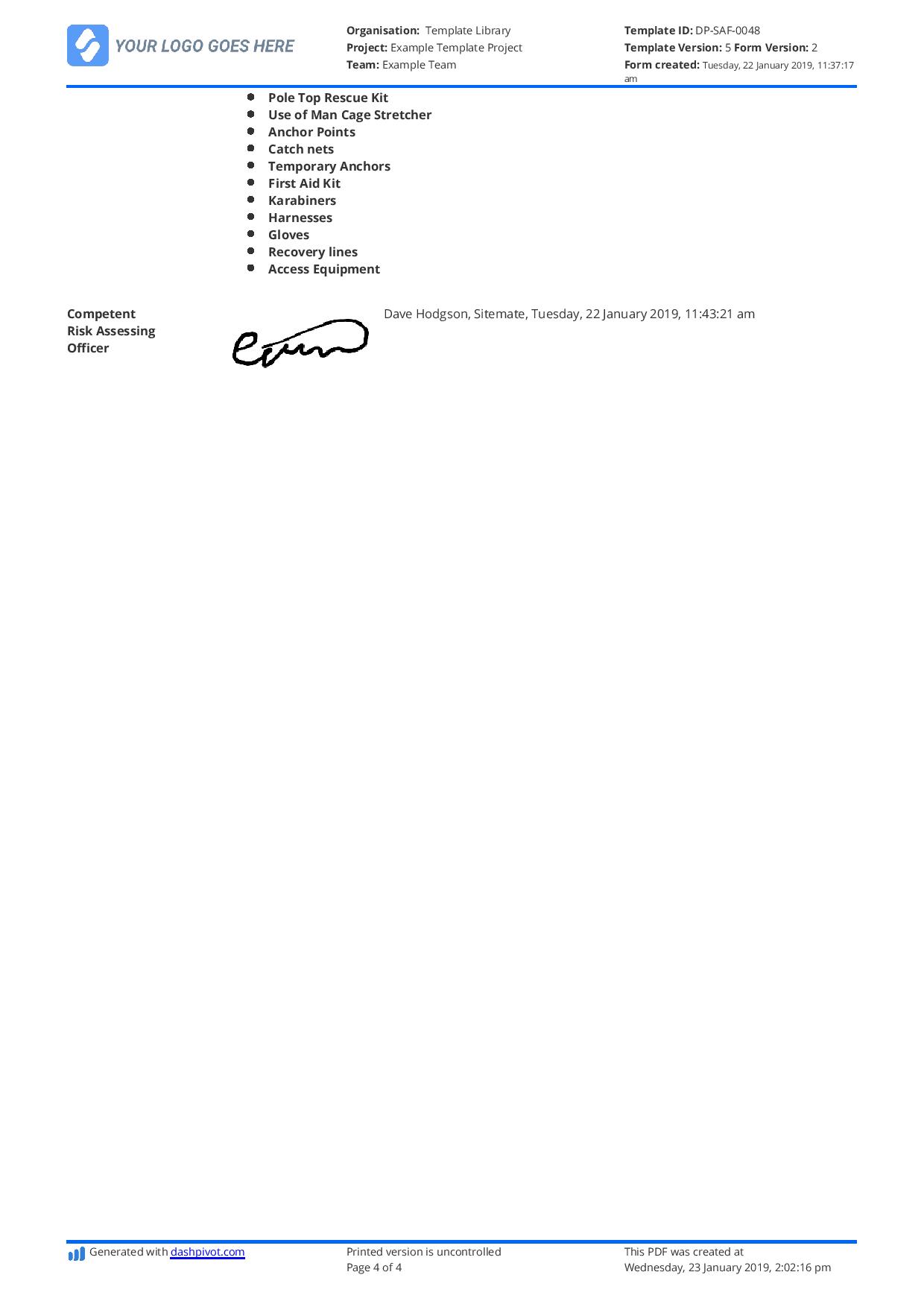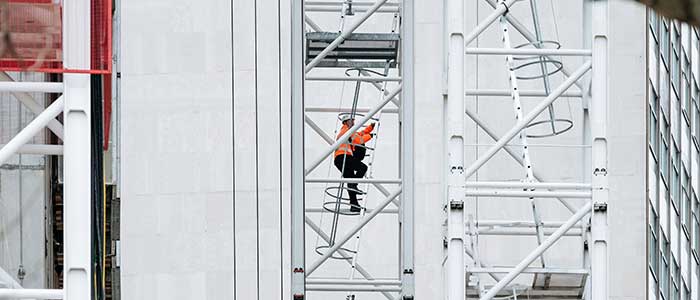Safety – Working at heights risk assessment example

An example of a working at heights risk assessment
Working at heights
Working at heights is extremely commonplace in a number of industries - including construction, electrical, fire fighting and window cleaning.
In these industries, workers frequently work from and at heights to simply get their jobs done.
Maybe it's partially because working at heights is so commonplace and normalised that it has become and remains so dangerous for workers all over the world.
Working at heights consistently ranks as the most common cause of fatal and non-fatal accidents to workers - often accounting for over a quarter of workplace deaths.
There are some obvious and inherent dangers involved in working at heights which are simply unavoidable, with the obvious one being falling. While the dangers of working at heights are unavoidable - falling and slipping at heights are largely avoidable - with over 60% of deaths occurring from falling off ladders, scaffolds, working platforms and roofs.
Many of these falls and the resulting deaths are preventable, when the right care and precautions are taken prior to and during the conducting of these works.
And one of the simplest and more reliable tools which companies can employ to mitigate the chances of these incidents is the trusty risk assessment.
Performing risk assessments
There are a number of working at heights safety documents and forms intended to help workers mitigate the risk of incidents, including working at height risk assessments and working at height permits like this.
The main reason for performing risk assessments - and working at heights risk assessments specifically - is to ensure that workers have taken the necessary precautions to keep themselves and other workers safe.
It's incredibly easy for workers who have been working on roofs, or using ladders, or throwing a harness on to take their granted for safety and simply 'get on with it'. It's also easy for workers to skip over basic and critical safety checks if they are not constantly reminded of them.
A risk assessment solves these issues:
- A working at height risk assessment guarantees (when filled out properly) that a worker has considered the dangers of working at heights
- The risk assessment forces a worker to come up with and create control and preventative measures for potential hazards specific to the work being performed today
- Conducting a risk assessment forces workers to think about safety, and be cognisant and aware of what they are doing and their surrounding environment
Risk assessment force workers to take 5, take a step back, and go through framework or guided set of questions and tasks which have been proven to 'catch' most of the working at heights safety issues.
Risk assessment can lead to updates to your working at height Job Hazard Analyses so your workers can work safer.
Working at heights risk assessment example
So you might have come here looking for a working at heights risk assessment example; and an example of a working at heights risk assessment you will get.
The below example showcases what a working at heights risk assessment on some roofing works looks like.
The type of works which are being conducted will impact the answers to the form field questions (obviously), but the framework for these risk assessments no matter what work is being conducted stays almost exactly the same.
The opening section of the risk assessment contains important record keeping information such as the date and location where the working at heights will take place, as well as a description of the work. This is important for context, and also ensures your safety records are sound in the event of an incident or audit.
The next part of the risk assessment, as you will see in the example, is a list of checklist questions around height considerations and hazard considerations. The purpose of these checklist items is to get workers to check that the fundamentals of working at height safety are taken care of - and that when something isn't right, work shouldn't go ahead.
The next critical section of the working at heights risk assessment is the traditional part of a risk assessment (you can expand the example by hovering over the form and clicking the button). which features a risk matrix.
Here, workers brainstorm and surface potential hazards, and rate them in terms of their likelihood and consequence. Then they create control measures and prioritise the hazards to reduce the chance of the hazards turning into incidents.
And finally, a good working at heights risk assessment will feature and emergency an emergency management plan, rescue plan and allocated PPE to ensure that people are ready for any eventualities which can be the difference between life and death.

Use and customise this working at heights risk assessment example for free.
Ways to improve working at heights safety
Managing working at heights safety is a constant endeavour for all companies and workers who face it frequently.
One of the ways in which companies can improve working at heights safety is to put more time and effort into ensuring that people conduct risk assessments, safety permits, and other safety measures in the proper way.
Companies can achieve this through verbal encouragement and a low tolerance for poor safety practices; through lowering the difficulty and time associated with documenting these safety practices (with software and apps like this); and through providing workers with the training and knowledge they all need to perform their jobs safely.
Many companies do this through formal training programs and lessons, while others focus more of their efforts on more informal toolbox talks like this, and many companies use a combination of both.
A critical element of project management is to improve worker safety across your projects and sites, and to create and encourage a culture of safety and constantly surface and discuss ongoing safety issues.
There are a number of things we can all do to decrease the number of working at heights incidents and fatalities - starting with conducting proper and thorough working at heights risk assessments.
People in 80+ countries use this safety management system to improve their safety processes and outcomes.





